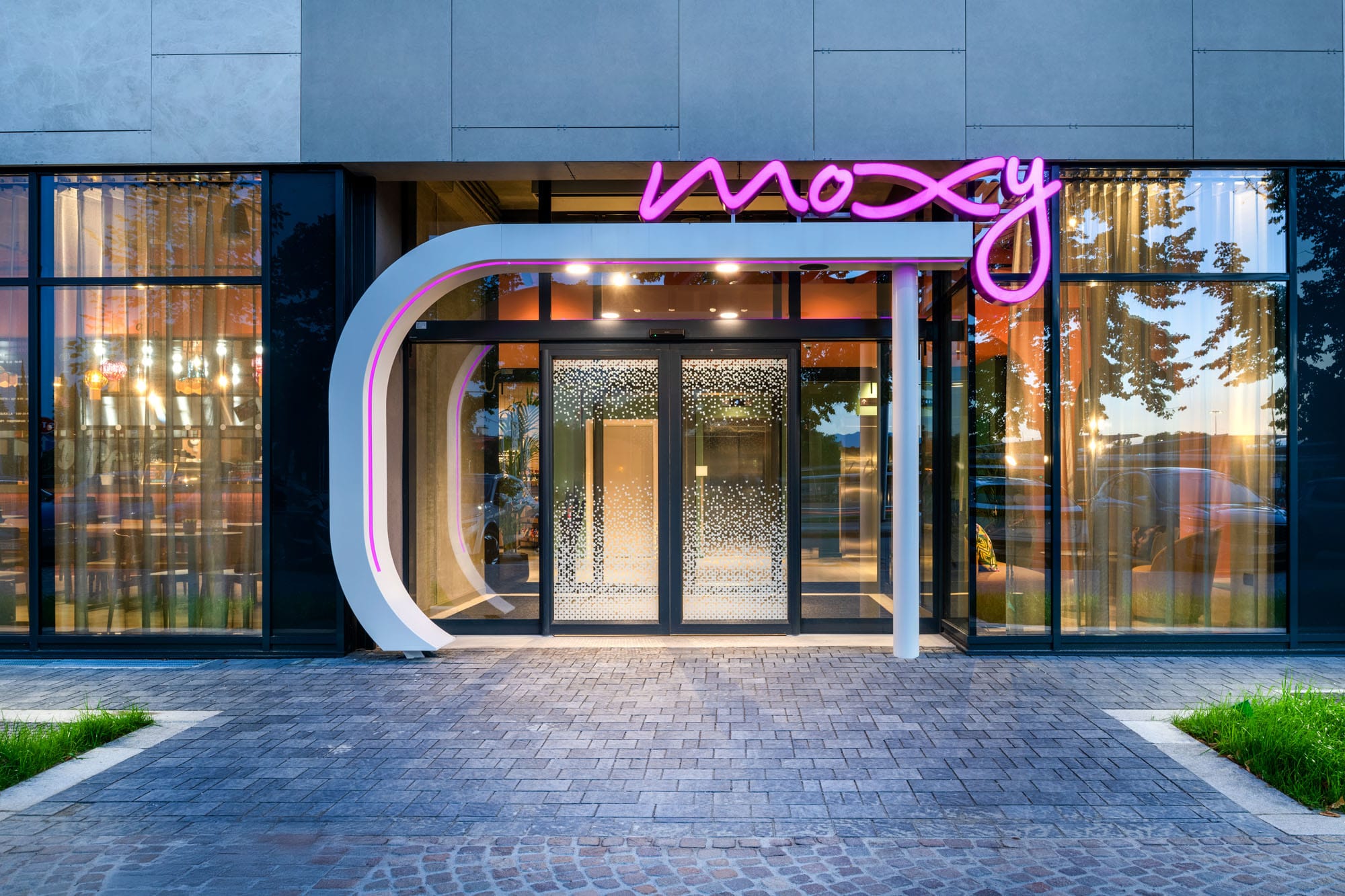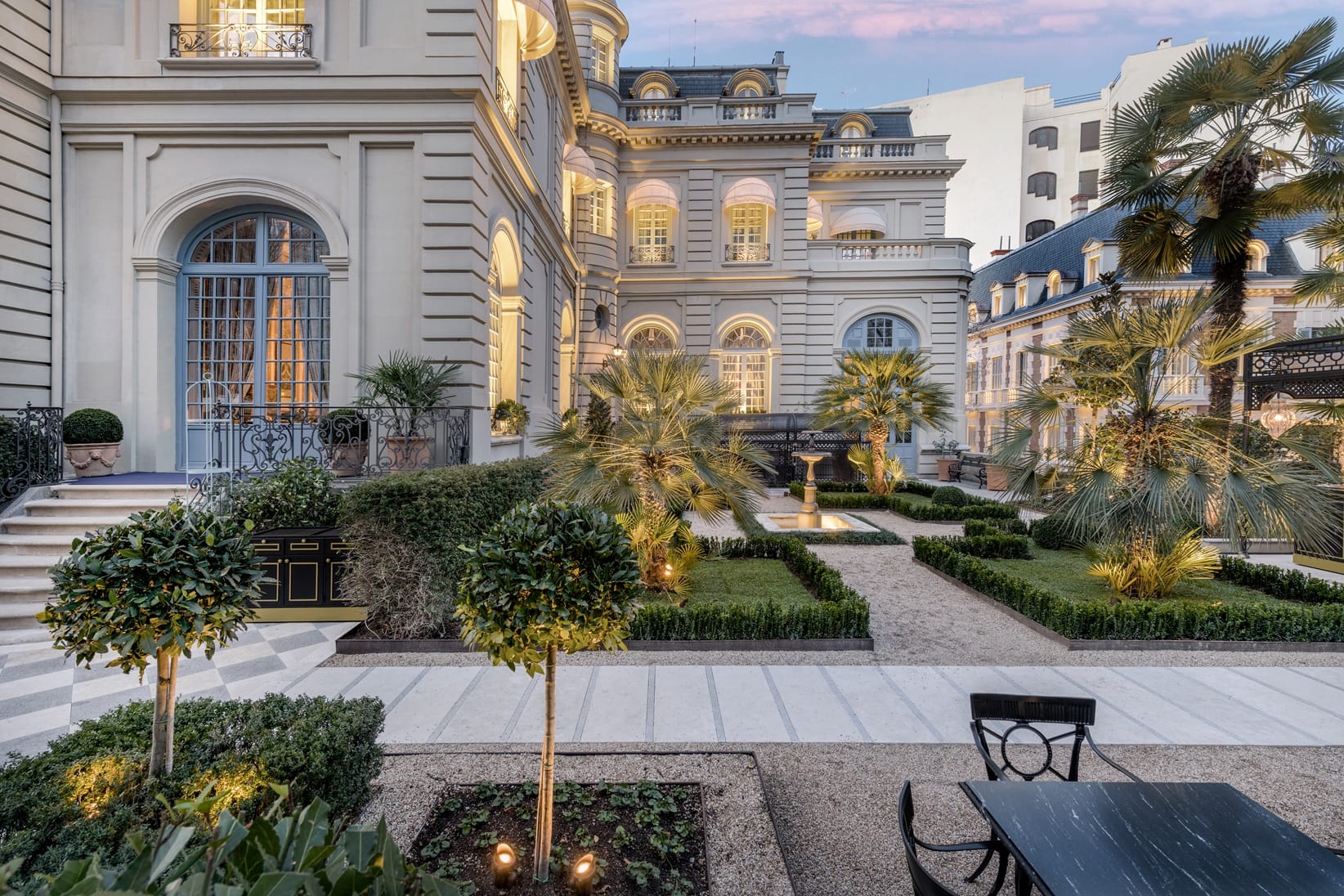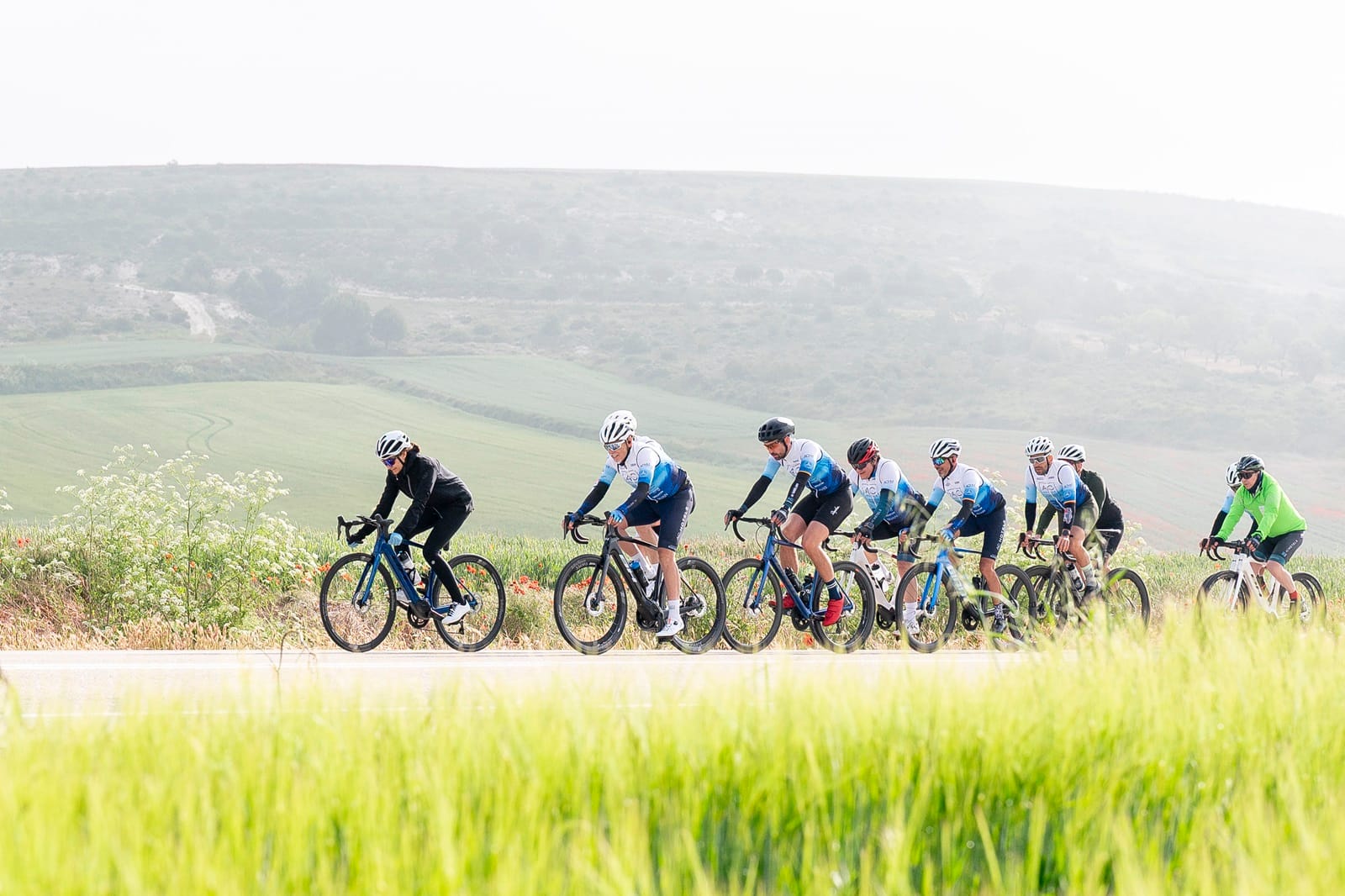La XXXIV edición de la Ruta Xacobea ACHM by Marriott suma seguidores a un proyecto excepcional con visión de futuro, creado por Antonio Catalán
Those who know him well recognize in Antonio Catalán an unparalleled charismatic person whose holistic drive transcends the business realm. His devotion to his loved ones has led him to cycle across more than half the peninsula several times a year, starting this journey with a promise for the recovery of his daughter Carlota after an accident she suffered and overcame as a child. Since then, and annually, he shares this pilgrimage with illustrious figures from different parts of the world, who, with their effort and team spirit, enhance each stage.
Antonio Catalán, a renowned hotel industry entrepreneur, reaffirms his title as the leader of a peloton, as surprising as it is unusual, composed of eighty cyclists from various business, professional, and artistic backgrounds who, through 6 stages, pedal to trace the path of the newly named XXXIV Ruta Xacobea ACHM.
Showcasing impeccable organization by ACHM Hotels by Marriott, the logistics carried out have allowed participants to join with their “imperial blue” jersey in a peloton that, over more than 800 km, has surpassed 7 mountain passes, facing an elevation gain of 8,000 meters

In this latest event, held, as usual, in early June, the entrepreneur and promoter of this demanding cycling event, unique in the world, was accompanied by a diverse array of personalities from the business world, the bullfighting environment, important sports celebrities like Miguel Induráin and Roberto Heras, regulars at this event, and his partners from the hotel giant, Marriott International, who repeatedly attend this incomparable event. In total, Antonio Catalán has managed to gather nearly 1,000 cyclists over the years in its various editions.
Stages of the XXXIV Ruta Xacobea ACHM
Navarra is always the starting point. AC Hotel Ciudad de Tudela is the meeting point where the welcome dinner takes place. After a symbolic starting signal, the peloton, led by Antonio Catalán, heads to his hometown of Corella for the traditional mass, inaugurating the first stage at the Parish of San Miguel, to then depart towards Logroño, where they find refuge at AC Hotel La Rioja, after covering the first 115 km.

The second stage becomes more demanding as it passes through lands that traverse cultivation areas and mountain ranges of varying relief, gorges where it is common to spot birds of prey soaring in the sky, and towns steeped in history, such as Santo Domingo de la Calzada, Ezcaray, Fresneda de la Sierra Tirón, or Ibeas de Juarros, known for its proximity to the Atapuerca archaeological sites, which are left behind in the peloton’s reflection on their way to discover the Burgos Cathedral, a World Heritage Site, before finding rest at AC Hotel Burgos.

From here, the cycling group departs on the third stage towards León, passing through the plains of the Páramo region with endless views of the plateau, subtly dotted with representative Romanesque jewels such as the Church of San Martín de Frómista. Behind them are towns whose medieval villages, like Carrión de los Condes in Palencia, captivate pilgrims with their Romanesque heritage.In their constant pedaling, they witness the historical remains of the Hermitage of the Virgin of the Bridge in Sahagún, of Romanesque-Mudejar style, standing since the 13th century. Other towns like El Burgo Ranero or Villaturiel follow in their path.
This phase ends in the heart of León, at the foot of two symmetrical towers and a large rose window that illuminates, through the stained glass windows, the ribbed arches inside, supported by the immense exterior buttresses, protagonists in what represents another marvel of Gothic art, the Cathedral of Santa María de Regla in León, which, along with the Burgos Cathedral, represents two of the three most important Gothic jewels worldwide. Rest comes later at AC Hotel León San Antonio.

The fourth stage directs the peloton towards Ponferrada, passing through towns declared Historical-Artistic Heritage for their incalculable monumental wealth, with Roman, Romanesque, Gothic, Renaissance, Baroque, and Modernist buildings and remains, such as the example of Astorga and its Episcopal Palace designed by Antoni Gaudí. The route continues through the cobbled streets and heraldic houses built of stone and red clay, passing through Castrillo de los Polvazares and Rabanal del Camino.
With sparse trees and a very pronounced ridge of the mountains, in the heart of the Montes de León, the cyclists reach one of the most exciting points of the pilgrimage, reaching 1,497 meters above sea level, to take a team photo at the Cruz de Ferro, which is the highest point of the French Way of St. James, between the towns of Foncebadón and Manjarín.

In an equally physically demanding descent, they pass through two of the towns considered the most beautiful in Spain, located in the El Bierzo region: El Acebo and Molinaseca, declared a Historical-Artistic Complex since 1975. This stage culminates in Ponferrada, located at the confluence of the Sil and Boeza rivers, known for housing the impressive Templar Castle, a National Historic-Artistic Monument since 1924. AC Hotel Ponferrada welcomes them to provide dinner and shelter with the highest quality standards.
Continuing their journey through El Bierzo, the peloton passes through unique enclaves in the fifth stage, which leads them to Portomarín. In this 120 km stretch, the beauty of the Castle of Sarracín in Vega de Valcarce stands out, declared a Cultural Interest Site. It is estimated to have been built in the 9th century and, despite adverse weather conditions, still retains its two watchtowers.

In this stage, this ACHM cycling team encounters two mountain passes, Alto de O Cebreiro, with an altitude of 1,305 meters and an elevation gain of 656 meters, and Alto do Poio, with an altitude of 1,335 meters and an elevation gain of 844 meters. After crossing several medieval villages in Lugo surrounded by nature, monuments, and historical buildings, they reach Portomarín, one of the most important towns on the Camino de Santiago, rebuilt in the Middle Ages next to a Roman bridge over the Miño River.

The sixth and final stage takes place in Galician lands. For 125 km, the team passes through charming towns such as Palas de Rey, Melide, or Arzúa (designation of origin of Arzúa Ulloa cheese), interspersed with fields, streams, and tranquil forests. The peloton concludes their journey by arriving at the historic center of Santiago de Compostela, a UNESCO World Heritage Site since 1985, where the latest edition of the Ruta Xacobea ACHM ends, after attending the Pilgrim’s Mass at the Santiago Cathedral and taking the family photo in the Plaza del Obradoiro.

The most emotional moment of the “French Way” takes place during the closing dinner at Palacio del Carmen, Autograph Collection, with a memorable gala where awards, laughter, and confidences put the finishing touch to a unique experience created by the Navarrese entrepreneur.


